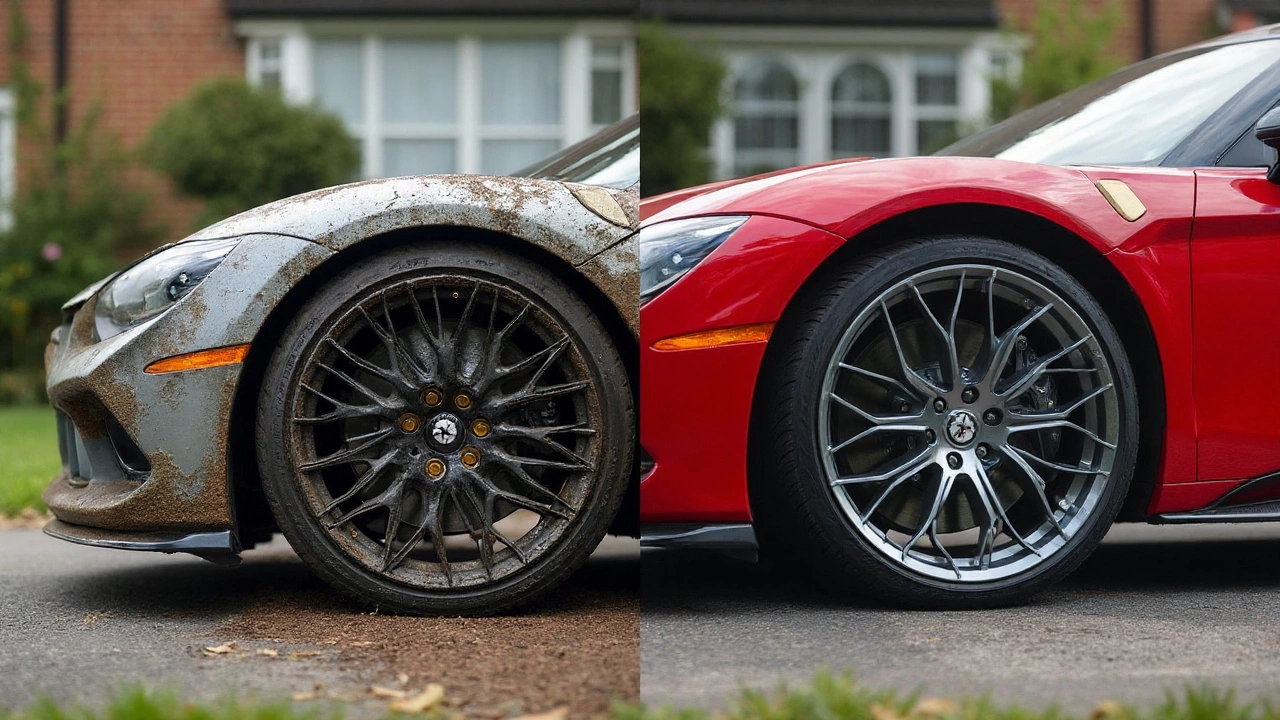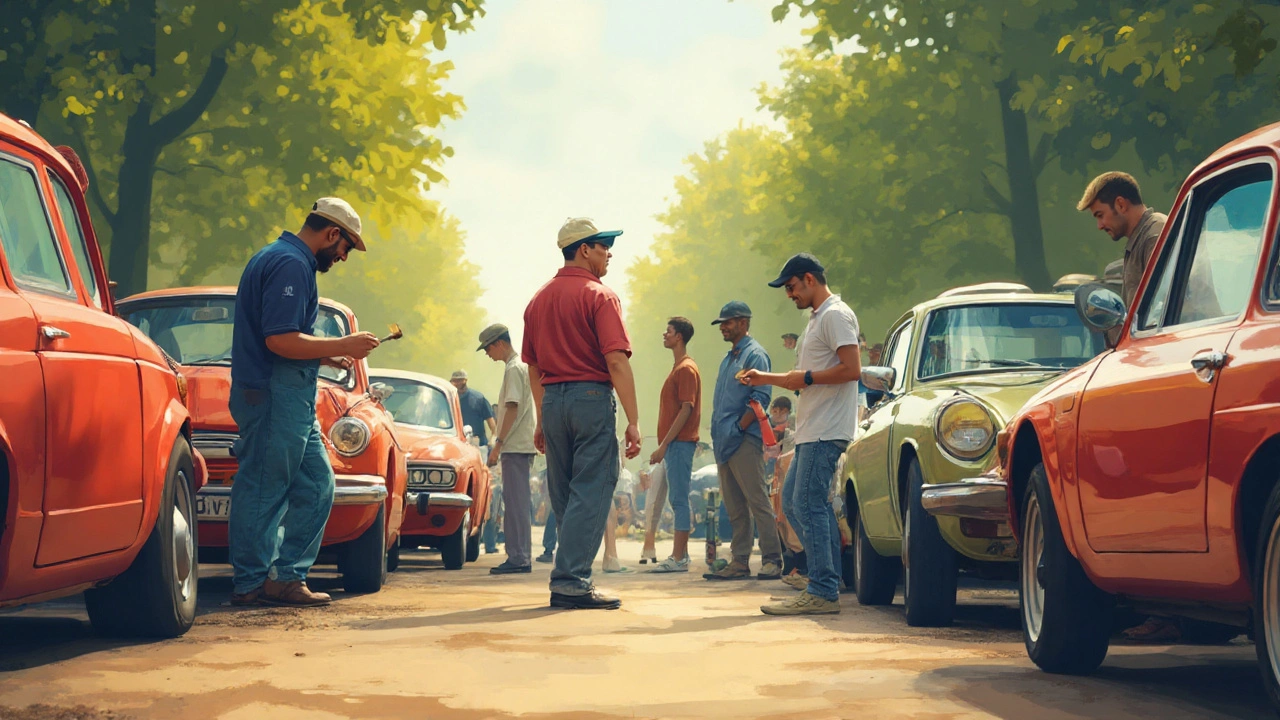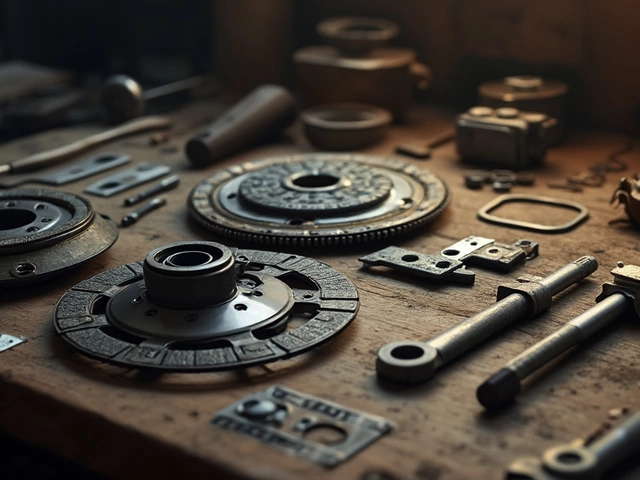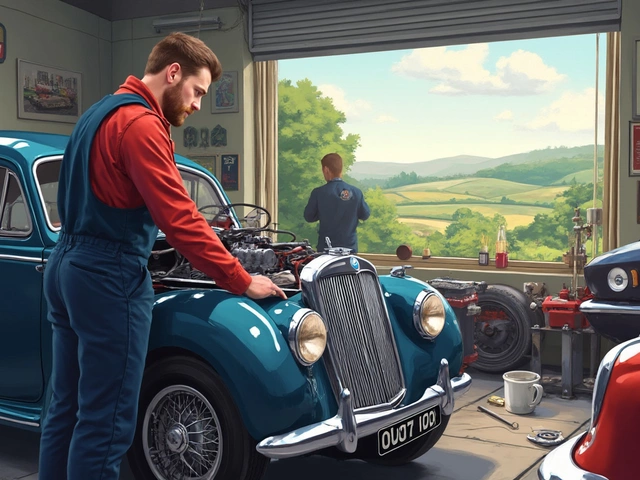Ever walk past a sweet ride and notice shiny, spotless rims, sparking like jewelry? Then the next car over has wheels that look like they've been through a salt blizzard. You might think, "Why doesn't everyone just go with alloy wheels and never worry about rust again?" Here's the twist—while alloy rims resist rust, they're not invincible. There's more bubbling beneath that glossy finish than meets the eye. If you're one of those drivers who dread the first signs of wheel decay, you’re in the right spot to unravel alloy rim mysteries.
Why Alloy Rims Are Different Than Steel: The Truth Behind Rust Resistance
If you've ever compared steel to alloy wheels, you know one looks heavy and solid while the other gleams with sporty charm. But the real drama happens at the microscopic level. Standard steel is iron mixed with a pinch of carbon—tough stuff, but it absolutely loves to rust. Why? Water, road salt, and oxygen gang up on iron, sparking a chemical reaction that turns it into reddish-brown rust flakes. Give steel a winter or two in Chicago, and it won't look the same.
Alloy rims, on the other hand, are typically made from a combination of aluminum (sometimes with added magnesium or other metals). Aluminum doesn’t rust the way iron does. Instead, it forms a whisper-thin layer of aluminum oxide when exposed to air. This isn’t like the flaky red stuff on steel—it’s almost invisible and protects the metal underneath. That means the surface of aluminum alloy rims stays sleek, at least to start with.
Check out how these two metals compare when faced with the elements:
| Factor | Steel Rims | Alloy Rims (Aluminum) |
|---|---|---|
| Corrosion Type | Rust (iron oxide) | Oxidation (aluminum oxide) |
| Visible Decay | Heavy, flaky rust | Dull or chalky film |
| Strength Loss | Significant with time | Limited, often only cosmetic |
| Weather Impact | High—they need wheel covers or treatments | Much lower risk of damage |
So why are people still asking, "Do alloy rims rust?" Old habits die hard. Steel dominated the roads for decades before aluminum alloys rose in popularity after the 1970s. Car buyers heard "alloy," thought "no rust ever," and underestimated the sneaky forms of damage that creep in. Rest assured, you won’t see traditional rust on aluminum alloy rims, but something else takes its place: corrosion.
Some car guys claim "once you go alloy, you never go back." But manufacturers will tell you there’s more to the story. A report from the International Journal of Automotive Engineering highlighted, "Aluminum alloys are highly resistant to classic rusting but still susceptible to pitting and oxidation, especially in harsh climates.” Weather, road salt, and brake dust can still cause your rims to look old before their time.

Can Alloy Rims Actually Corrode? Causes, Signs, and Common Myths
It doesn’t take a chemistry degree to spot the difference between rust and corrosion, but plenty of folks miss the signs. Classic rust is all about that reddish, crumbly stuff you can flake off steel wheels. With alloy rims, you’re likely dealing with milder, sneakier forms of damage. Here's what screws up alloy rims most:
- Road Salt: In colder climates, salt eats away protective coatings and seeps into scratches or chips. The result? White, powdery corrosion patches called "white rust." It can look almost like dried bird droppings or cloudy stains, especially around the lug nuts and rim lips.
- Brake Dust: Your brakes throw fine metal particles all over the wheels. Let that gunk pile up, and it bakes into the clear coat. Over time, it can pit the rim’s surface, making it dull and rough.
- Chipped or Damaged Finish: Scrape your rims on a curb, and you might break through the protective clear coat. That’s when oxidation sneaks in under the surface. It’s not dramatic at first, but you'll get creeping "spiderweb" cracks, bubbling, or cloudy patches.
- Electrochemical Reactions: This is where things get technical. If your rim metal touches another metal (say, a poorly matched wheel weight or replacement stud) and moisture gets involved, you can set off a tiny battery that accelerates corrosion right where you don’t want it.
Pitting, flaking, or white hazy patches aren’t just ugly—they can weaken the part of the rim that forms a seal with your tire. If rims get too out of shape, you risk annoying air leaks, constant tire pressure warnings, or even a blowout. According to a 2022 survey by Consumer Reports, more than 23% of owners admitted corrosion was why they replaced or refinished their alloy wheels—usually after five or more rough winters.
Don't fall for quick fixes or magical “anti-corrosion” sprays sold at your local shop. Those can protect the finish for a month or two, but they're not a miracle solution. Aftermarket clear coats sometimes end up yellowing in the sun. Some “DIY repairs” even shorten the life of the rim if not done right.
Auto experts have a lot to say on the subject. As quoted in Car and Driver magazine:
“Alloy rims aren’t immune to corrosion, especially when protective coatings are compromised. Regular care is the best strategy to avoid expensive repairs later.”
And don’t get caught up in the myth that all alloy rims are made equal. Cheaper aftermarket alloys sometimes skip extra coating layers, making them magnets for damage in tough regions. Even premium rims will suffer if you ignore them too long or hit every pothole in town.
Signs your rims need attention? Watch for bubbling around the valve stem, cloudy spots that don’t wash off, chipping paint, and weird white powder (aluminum oxide). If your tire keeps losing air, it might be from corrosion around the bead seat. Most car shops find this during regular service, but it can sneak up on you fast if you live where roads get salted all winter.
The truth: Alloy rims don’t rust like steel, but they absolutely corrode if you skip regular care.

How to Keep Alloy Rims Looking and Performing Their Best
If you're hoping to keep your wheels looking showroom-fresh, you've got to work a little. But here’s the upside—routine care is way easier than salvaging badly corroded rims. Start with the basics: Use a mild, pH-neutral wheel cleaner and a soft brush to wash away brake dust, road grime, and salt at least every two weeks (or more if you do a lot of winter driving). Avoid anything abrasive, even those "mega scrub" sponges you see at gas stations, because they'll scratch the coating and make your problems worse down the road.
Rinse thoroughly, and dry the wheels so no water or cleaner lingers in crevices. Stubborn tar spots or brake dust chips? Use a dedicated tar remover or clay bar instead of razors or metal scrapers. Polishing with a quality non-abrasive polish a few times a year can restore shine and fill micro-scratches, which helps the coatings work better. If you’re finishing with wax, go for something specifically made for alloys—regular car wax works, but some products do a better job dealing with high-heat brake dust and harsh rain.
If you spot a scratch, bubbling, or clear coat peel, fix it quickly with a touch-up kit. For more serious cases, a wheel repair shop can refinish and reseal the rim, adding years of life back. The cost varies, but usually runs way less than shelling out for brand new wheels. For anyone in nasty winter zones, a set of budget steel rims with winter tires can take the beating, leaving your alloys to rest until spring. This old-school trick saves cash and keeps those shiny wheels looking new for summer cruises.
Not all hazards are obvious. Automatic car washes can sometimes use harsh chemicals or brushes that strip coatings. Even parking near the ocean exposes your wheels to salty air—watch for trouble if you live around beaches. If you absolutely need to roll year-round with alloys, there are rim sealants designed to lock out road salts for longer stretches. Think of it like sunscreen for your wheels. But nothing beats a hose, soap, and real attention.
Store your vehicle under cover or inside a garage whenever you can. UV rays fade finishes and dry out rubber, which can crack or peel the rim’s sealant layer. For the perfectionists, a soft tire dressing (non-silicone, non-oily) spruces up the look and slows harmful build-up. If you tow, track, or drive heavy-duty vehicles, check the rims for cracks or pitting—those spots get stressed harder and fail faster. Don’t forget to inspect valve stems and wheel nuts while you’re at it; corrosion loves metal-to-metal spots.
People often neglect the inside of the rim—the barrel. This spot collects the most brake dust, especially on front wheels. Give it an extra scrub, and you’ll help prevent inside-out corrosion that can sneak up and break a tire bead. When swapping tires, have the shop inspect and clean the mounting surface. They can also add a light coat of tire bead sealant if corrosion’s an issue for your setup.
Here’s a cheat sheet for year-round alloy wheel care:
- Inspect and clean wheels every two weeks (once a week in winter or after heavy storms).
- Use only dedicated, non-acidic wheel cleaners. Skip household and oven cleaners.
- Dry wheels completely after washing to avoid water spots and residue.
- Touch up chips and scratches ASAP with OEM-matched paint or sealant.
- Store alloys when possible during harsh winters—swap on dedicated winter wheels.
- Wax or seal wheels a few times a year for extra protection.
- Check air pressure regularly. Corroded beads leak more often.
- Ask your mechanic to check for corrosion at every tire change or rotation.
So, the next time someone tells you alloy rims don’t rust or need zero care, you’ll have the facts. Aluminum’s shield against classic rust is tough but not magic. Alloy rims look fantastic and turn heads, but they only stay that way with a little regular attention and the right products. Drive smart, clean up often, and keep rolling sharp. Your wheels—and wallet—will thank you in the long run.






